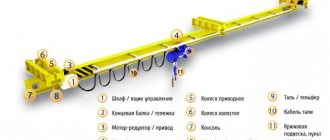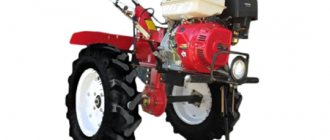Transportation by freight transport in industrial and post-industrial society they perform the main functions in flow processes. It is from development and improvement transportation by road economic growth and business development (especially small and medium-sized ones) directly depend. Transportation by road is a rather complex process from a logistics point of view, this is due to the versatility of such transportation.
Cargo transportation by road, despite all the organizational difficulties, remains the most convenient and regulated option from a logistics point of view. Only in transportation by road can you influence all aspects, including the route, type of transport, speed of transportation, etc. No other type of cargo transportation offers such space for optimization. In addition, it is transportation by road that is the least demanding in terms of conditions (weather conditions, availability of tracks, equipment for loading and unloading operations, location of warehouses, etc.).
Thanks to this situation, road transport will already gain undeniable primacy in the domestic logistics market in the next decade.
Transportation by road: features of the process
Organizing transportation by freight vehicles is a complex, multi-level process that requires integration of the efforts of the forwarding department and the carrier itself. Such integration can be carried out in two ways: cooperation between forwarding companies and direct carriers, or through the creation of large logistics companies that perform the entire chain of work related to the transportation of goods by road.
The main stages of organizing transportation by road, to which special attention should be paid:
- Preparation of the route and loading operations;
- Selecting a vehicle based on the specifics of the cargo;
- Development of mechanisms to ensure cargo safety;
- Control over the transportation process.
At each of these stages, it is important to dynamically combine two main criteria: quality and financial feasibility. The main task of modern cargo transportation is to find the optimal balance for the sender and the company between the quality and price of services. To find such a balance, domestic cargo carriers need to take into account a number of specific features:
- Large length of road transport routes (in Russia there are 984,000 km of paved roads);
- Inadequate quality of road surface, which always negatively affects the quality of road transportation, its cost and speed, and also contributes to the rapid aging of the truck fleet;
- An imperfect legislative framework, which leaves many difficulties in transporting freight by road, especially at the federal level;
- Low level of development of related logistics services, including forwarding and insurance services;
Solving these problems will make it possible to more dynamically develop the field of road transport in Russia, as well as to qualitatively integrate it into global logistics.
Organization of road freight transport
Category: Logistics
Organization of road freight transportation occurs in the following stages:
1)
analysis and identification of transportation needs;
2) analysis of the geographical picture of transportation and drawing up rational routes;
3) drawing up a cargo flow diagram;
4) selection of types and types of vehicles;
5) determination of the productivity of the transport unit;
6) calculation of the need for vehicles by type;
7) drawing up a transport schedule for shipment;
 calculation of cargo turnover by calendar periods of work (per shift, day, week, month).
calculation of cargo turnover by calendar periods of work (per shift, day, week, month).
The organization of cargo transportation consists of establishing the procedure for preparing and performing transportation, management, accounting and control, a document flow system, a payment system for cargo transportation, etc.
Traffic volume
is the amount of cargo to be transported, in tons per unit of time.
Freight turnover
— volume of transport work in ton-kilometers per unit of time (tkm).
Freight flow
- part of the freight turnover in a certain direction.
The choice of in-plant transport options is also made taking into account economic indicators. The main economic indicator of transport performance and the main criterion when choosing its type is the cost of transporting cargo. The cost of external transportation by general transport is determined by current tariffs, and internal transportation by calculations. To evaluate various options for transporting goods, the indicator of the value of reduced costs (Cpr) is used:
Spr = C + KE,
Where
C is the cost of delivery;
TO
— one-time costs;
E
— investment efficiency ratio.
The cost of intra-production transportation (C) is determined by the formula:
WITH -
Ses + Spr + Set.,
Where _______________
CES - cost of operating vehicles for the billing period;
Ref
— cost of loading and unloading operations;
Set is the cost of operating vehicles.
Transportation of goods by road is a complex production process, consisting of a number of operations that form a general technological process. The process of delivering cargo from senders to recipients consists of three main elements:
1)
loading cargo onto a vehicle at points of departure;
2) movement of cargo by vehicle from points of departure to points of destination;
3) unloading cargo from rolling stock at destinations.
When delivering cargo, there is also a need to perform various other works related to the transport process (such as: acceptance of cargo from the consignor and delivery of it to the consignee, escort and security of cargo during transportation, registration of shipping documents, etc.). The entire complex of work related to the transport process, performed from the moment the cargo is received at the point of departure until the cargo is delivered at the point of destination, is called forwarding work. Depending on the location, transport and forwarding work can be complex and local. Complex ones cover all types of operations from the moment the cargo is received from the sender until it is delivered to the recipient.
Local operations are divided into operations performed at the place of departure, along the route and at the place of arrival. Transport and forwarding work can be carried out both by the shippers and consignees themselves, and by special organizations specializing in transport logistics.
44. Transport documentation
Transportation of goods is always preceded by agreement on the basic conditions of transportation (timing and number of vehicles required for transportation, as well as the volume and nature of the goods transported). According to the general rule enshrined in Art. 784 of the Civil Code, the transportation of goods, passengers and luggage is carried out on the basis of a contract of carriage. The conclusion of a contract for the carriage of goods requires the presence of organizational prerequisites. They are embodied in reciprocal actions of the parties to the transportation obligation: the carrier must provide serviceable vehicles for loading, and the shipper must present the cargo for transportation (Article 791 of the Civil Code). The prerequisites for concluding a freight transportation contract today can take on legal forms:
1) applications (orders) for railway, river, road and air transport;
2) contracts on the organization of transportation (annual, navigation, etc.) on any type of transport;
3) administrative planning acts in the special cases mentioned. In addition, sometimes all the organizational prerequisites for concluding a contract for the carriage of goods are simply contained in the contract of carriage itself, which is of a consensual nature.
With the application (order) system, shippers provide the carrier with information about their transportation needs. In railway and river transport, ten-day applications are especially distinguished (Article 28 of the Railways and Art. 61 of the UVVT). Submitting an application initiates the process of transporting goods, but is not considered an offer in the contract of carriage.
The contract for the organization of transportation is concluded in the manner established by Art. 798 Civil Code.
To allow vehicles and drivers to participate in road traffic, the following documentation is required:
1) driver's license;
2) temporary permit to drive a vehicle;
3) vehicle passport;
4) vehicle registration certificate;
5) vehicle chassis passports;
6) technical inspection certificate;
7) certificates-invoices for the vehicle or numbered unit.
 State registration plates for vehicles of types 16-18 “Transit” in accordance with GOST R 50577-93 “State registration plates for vehicles. Types and main sizes. Technical requirements";
State registration plates for vehicles of types 16-18 “Transit” in accordance with GOST R 50577-93 “State registration plates for vehicles. Types and main sizes. Technical requirements";
9) State registration plates of vehicles of types 1-10, 19-22 in accordance with GOST R 50577-93 “State registration plates of vehicles. Types and main sizes. Technical requirements".
Transportation of goods must be carried out with the appropriate transportation documents held by the driver of the vehicle during transportation.
1. Transport
(commodity transport) waybill of the approved standard form. The forms and procedure for issuing a transport (goods and transport) waybill are established by the requirements of the Charter of Road Transport of the Russian Federation, as well as the “Rules for the preparation of transport documentation for road transport”,
developed and approved by the federal motor transport authority in agreement with interested government bodies.
2. Accompanying customs, sanitary, technological documents.
3. Waybill.
The waybill is the main shipping document. Drawing up a transport (consignment note) serves as confirmation of the conclusion of a contract for the carriage of goods. It is intended to account for the movement of inventory items (writing off from shippers and capitalizing them from consignees), the results of the work of freight vehicles and for payments for transport work performed.
Freight transport: risk factors
Road transport, despite all its complexity, is an incredibly profitable area of logistics. For successful transportation by road, a number of risk factors should be taken into account:
- Unfavorable meteorological conditions and inappropriate condition of the road surface - these risks must be taken into account when planning the route! And even if it is possible to adjust the transportation route by road, it will be impossible to negotiate with the weather conditions.
- Emergency situations and vehicle breakdown. Timely technical inspection allows you to minimize the risk of any troubles during the transportation of goods by road.
- Threat of theft or other illegal activities. When transporting by road, you must vigilantly monitor the condition of the cargo, always leave the vehicle closed, and avoid deviations from the route and unusual situations. It is better to insure the cargo.
- Human factor. The experience and professionalism of the driver play a key role in successful transportation by road.
Taking into account all these risks will make the process of transportation by road safer and easier, and, accordingly, get greater benefits for the sender and the direct carrier!
Call us for all questions about truck by phone
Order transportation by road
Features of cargo transportation by road
Cargo transportation by road is the most flexible option for transporting consignments. An independent schedule and relatively low cost have made this type of transportation basic in the structure of the continental commodity network. But it should be remembered that even with the current level of development of transport technologies, there are a number of specific risk factors that must be taken into account during the development of the contract.
In the field of international road freight transport, the following reasons for potential instability are identified:
- Poor road conditions and unfavorable weather conditions. In this regard, the logistics operations planning department is one of the most important in the structure of a transport company, and a technical consultant is always ready to explain how the independence (or dependence) of the route from weather factors is ensured.
- Vehicle breakdowns due to insufficient or untimely maintenance. Theoretically, the risk from this factor should be minimal, since all equipment used in cargo transportation by road should not be released on the route without the appropriate documents on timely maintenance.
- Reasons due to the professional skills of drivers. We note that in addition to careful selection of personnel, the risk of this category is significantly reduced today thanks to the mandatory use of tachographs, which strictly record the work and rest schedule of drivers along the route.
It is also worth mentioning the need to ensure the safety of road freight transportation in terms of cargo theft. Today, the risks of this category are mitigated by continuous remote control over each transport object that leaves the route. There is a panic button in the driver's cabin, and if necessary, armed security can be ordered.
carries out planning and accurate execution of any cargo transportation by road , including the organization of all necessary logistics activities. At the same time, clauses on automatic customs clearance and certification may be included in the contract, which will ensure minimal time for preparing goods for trade operations. You can learn more about the features of a specific stage of road freight transportation during a consultation by phone or through the feedback form located in the “Contacts” section.
Related posts:
Types of road freight transportation
Technical support for international road transport transportation
Types of international freight transport of cars
Cargo is a method of collecting goods for shipment from Turkey, when goods from several buyers are loaded into one container, each of whom pays for transportation exactly as much as his cargo took up space. Read more in the material on dzen.ru
Cargo transportation agreements
The main point of cargo transportation is the signing of an agreement on the delivery of goods to the required location. Trade enterprises and organizations enter into contracts for cargo transportation, which stipulate the volume and timing of delivery, conditions for loading and unloading operations, financial responsibility, implementation of rational forms of cargo delivery, routes and cargo transportation schemes.
Finished works on a similar topic
- Course work Automobile transportation of goods 440 rub.
- Abstract Automobile transportation of goods 220 rub.
- Test work Automobile transportation of goods 190 rub.
Receive completed work or specialist advice on your educational project Find out the cost
Goods, cargo or other items that need to be transported must be properly prepared for transportation. They must be packed in inventory containers and grouped by product items. There must also be all the necessary accompanying documents. Before receiving cargo for transportation, the driver is checked for a waybill and an identity document. Acceptance of cargo by quantity is carried out by weighing, recalculating places, and the signature of the responsible person is placed on all copies of accompanying documents.
Delivery by road is divided into two types:
- centralized – cargo is delivered to one recipient;
- decentralized – cargo is delivered to several recipients.
When choosing a type of vehicle, there are six rules to consider:
- Delivery time;
- Frequency of cargo dispatch;
- cargo delivery schedule;
- the ability to transport different cargo;
- the ability to deliver cargo to any destination;
- transportation cost.
Too lazy to read?
Ask a question to the experts and get an answer within 15 minutes!
Ask a Question









